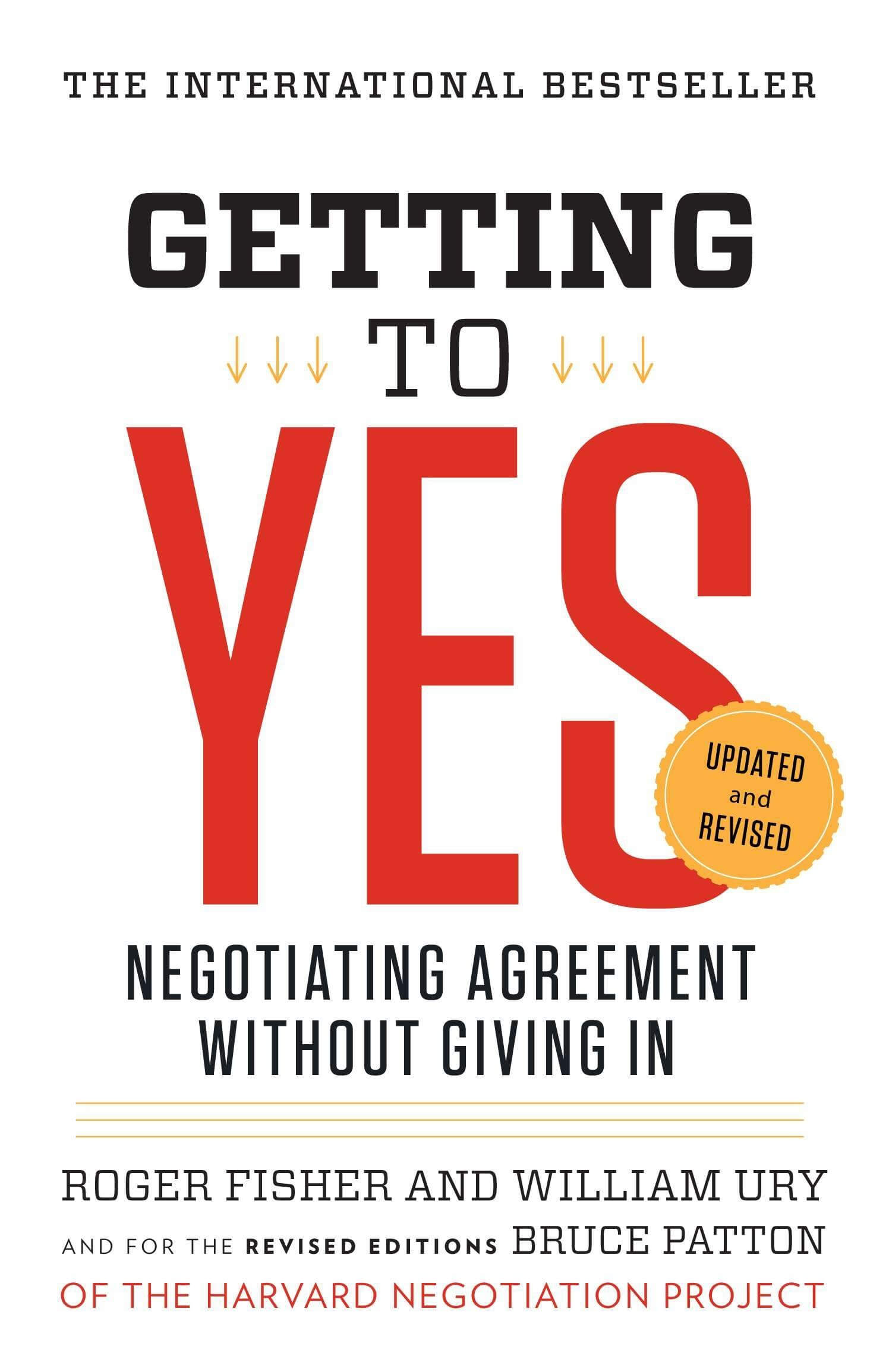Congratulations! You've unlocked a 50% discount.
Thanks for visiting sumizeit.com. As a new user, you can use coupon code WELCOME for a 50% discount off a premium subscription.

TIME TO CLAIM

New Feature! Download infographics with key insights from bestselling non-fiction books.
Book Summary
The purpose of negotiation is to get the desired outcome from interactions with others. To reach a resolution, a communication exchange must take place. A principled negotiation method is a middle-ground approach that avoids pandering to the will of either side by coming to a resolution based on fairness and opportunities for mutual gains. Remember to keep the negotiation about the people behind the arguments, not the arguments themselves; do this by focusing on the relationship first and foremost before addressing the argument. Getting to Yes set forth the groundbreaking concept of the BATNA- Best Alternative to a Negotiated Agreement. The best decision may actually be to acknowledge that no decision should be made after all.
The three criteria for judging negotiation methods are the ability to reach an agreement, the efficiency of the method, and its amicability towards all concerned interests.
The aim of any negotiation is to reach a wise agreement. What that looks like is one where position-arguing is not the foundation of the negotiation. Instead, merit-based negotiation is the root of compromise.
Positional arguments result in arguments between egos, as both parties become ‘locked-in’ and defensive over their respective stance.
Positional arguing is not efficient and can result in damaged or broken relationships between parties.
Instead, principled negotiation, which is merit-based, focuses on people, interests, and criteria and not positions and the egos behind them.
Never lose sight of the human element of negotiations; separate the people from the problem. People come first.
Negotiations happen between human beings with emotional investments and biases, not just sides of an argument.
The relationship between the parties on opposing ends of the negotiation is just as (if not more) important than the outcome of the negotiation in question.
Position-based negotiation creates a space where the human element and the argument become entangled. When this happens, it becomes all too easy to focus on the problem and not the other person(s).
Return the focus of the negotiation back to the people involved. Do this by addressing the three categories of problems associated with the human element of any negotiation: perception, emotion, and communication.
Perception: reality is subjective to the point of view of participants on either stance of a negotiation. In order to influence an opponent, empathize with their point of view by understanding their personal connection to the outcomes associated with their viewpoint. Then, loudly and clearly communicate those things which you are willing to accept that your opponent wants to hear.
The basis for an agreement can happen when both parties feel a sense of ownership for the ideas forming the root of the negotiation.
Emotion: Acknowledge that your opponent has fears, hopes, and personal feelings tied to their position. Build rapport by giving attention to their need for autonomy, appreciation status, and sense of purpose. Reflect on how your words may be perceived as a threat to your opponent’s image or sense of identity.
Communication: Communicate effectively by actively listening. Speak from a position of yourself instead of an attack against them. Acknowledge their concerns and let them know...
Users get access to two FREE summaries. Become a pro user for unlimited access.
Login Congrats! You've unlocked a 50% discount. Use coupon code WELCOME for 50% off Sumizeit Premium.
Congrats! You've unlocked a 50% discount. Use coupon code WELCOME for 50% off Sumizeit Premium.Save time with unlimited access to text, audio, and video summaries of the world's best-selling books.
Become a pro user

Try Sumizeit to get the key ideas from thousands of bestselling nonfiction titles. Listen, read, or watch in just 15 minutes.

Highest quality content
Our book summaries are crafted to be unbiased, concise, and comprehensive, giving you the most valuable insights in the shortest amount of time.

New content added constantly
We add new content each week, including New York Times bestsellers.

Learn on the go
Learn anytime, anywhere - read, listen or watch summaries on IOS, tablet, laptop, and Kindle!

Cancel anytime
Changed your mind? No problem. Cancel your subscription anytime.

Collect Achievements
Learning just got more rewarding - track your progress and earn prizes using our mobile app.

And much more!
Improve your retention with quizzes. Enjoy PDF summaries, infographics, offline access with our app and more.
Join thousands of readers who learn faster than they ever thought possible.




Olga Z.
I love this app! As a busy executive, I don't have time to read entire books, but I still want to stay informed. This app provides me with concise summaries of the latest bestsellers, so I can stay up-to-date on the latest trends and ideas without sacrificing my precious time.
Chen L.
Very good development in last months. Content updates on a regular basis and UI is getting better and better.
Erica A.
Great product. Have used them for a long time. One of my favorite things about them is that they are able to summarize a whole book into just 10 minutes.
William H.
This app has been a lifesaver for my studies. Instead of struggling to finish textbooks, I can quickly get the key points from each chapter. It's helped me improve my grades and understand the material much better.